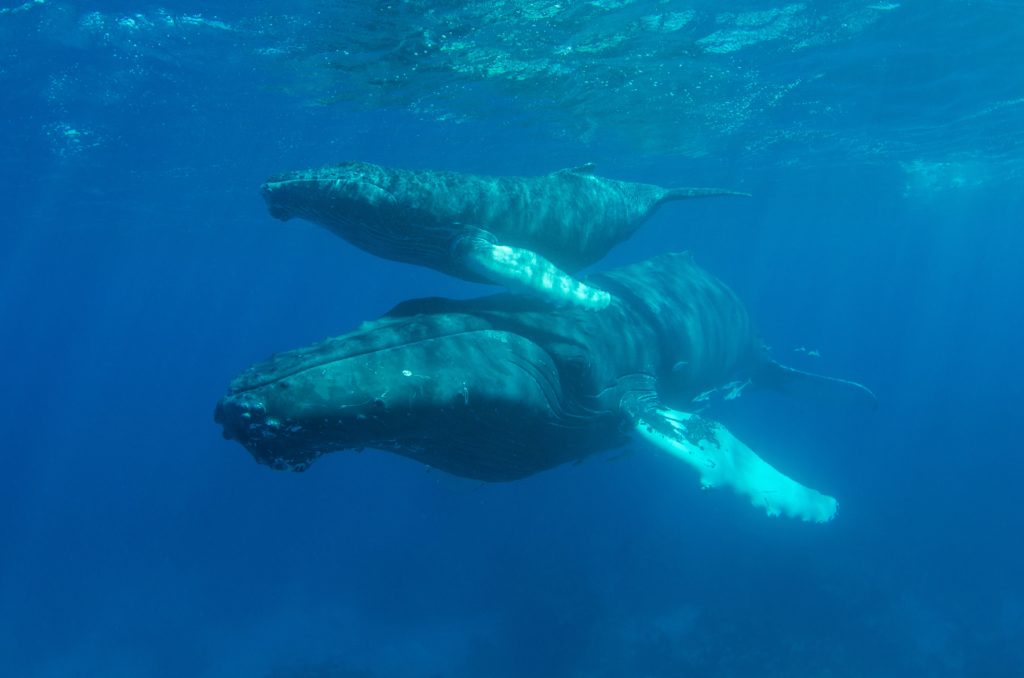
I learned this today. Whales can hold their breath for so long because they can store oxygen in their blood and muscles.
On average, whales can hold their breath for about 60 minutes. The sperm whale can hold its breath for about 90 minutes and the Cuvier’s Beaked Whale can hold its breath for 138 minutes. They also dive extremely deeply. The Humpback Whale can dive to about 1,000m and the Cuvier’s Beaked Whale can dive to about 3,000m.
So, why can whales hold their breath for so much longer than we can? The current breath-holding world record for a human is 11 minutes and 35 seconds. That is incredible for a human, but it is peanuts when compared to a whale. There are a number of reasons, but they have nothing to do with the size of the whale’s lungs. Whales obviously have big lungs, but their lungs are actually smaller when compared to their body size than ours are. Our lungs take up 7% of our internal body cavity while a whale’s take up 3%. There are other differences.
The first is the efficiency of their breathing. We breathe about 15 times a minute, but we only absorb about 5% of the oxygen from each breath. A whale can absorb 90% of the oxygen that they breathe in. This is because they have more alveolar sacs in their lungs than we do. Alveoli are small sacs that allow oxygen to pass into blood and carbon dioxide to pass out. The more alveoli an animal has, the more efficient its breathing will be.
Whales can also move more oxygen away from the alveoli because they have more hemoglobin in their blood. Hemoglobin is a protein in blood that carries oxygen. Our blood is 30% hemoglobin while a whale’s blood is 60%. On top of this, whales have almost four times as much blood in ratio to body size as we do. That means they can take far more oxygen out of each breath than we can.
Once they have taken the oxygen out of the air, they need to store it. All mammals can store oxygen in their muscles by using a protein called myoglobin. It binds oxygen molecules. Whales have far more myoglobin than any other mammal (about 10 times more than we do) and this allows them to store oxygen to be used when needed. Whales also have positively charged myoglobin. Because they all carry the same charge, it forces the myoglobin to spread out through the whale’s muscles, making it even more efficient.
Once they have absorbed and stored as much oxygen as possible, whales can slow down their heart rate to make the oxygen they have stored last as long as possible. They are able to consciously alter their heart rate and sometimes can go as low as 2 beats per minute. They then turn off the blood flow to non-essential organs. They stop the blood supply to their skin, stomach, liver, and kidneys.
When whales start to run out of oxygen, they can switch to anaerobic respiration, but this causes lactic acid to build up in the muscles. This is usually their last resort. The Cuvier’s Beaked Whale, however, can swim underwater for another hour even after switching to anaerobic respiration.
These adaptations allow them to go without breathing for over an hour at a time with no brain damage. When they come to the surface, they exhale all of the stale air in their lungs through their blowhole. This is a hole on the top of their heads. It is closed when relaxed and the whale can open it by tensing muscles. Whales don’t breathe automatically, as we do, but have to consciously think to breathe. This stops them from accidentally breathing underwater.
Because of the location of the blowhole, whales can sleep underwater. They are buoyant and float near the surface. They sleep with one half of their brain at a time. This is so that they can keep alert for predators and obstacles, but it is also so they can breathe when they need to. They float near the surface and can breathe by just having their blowhole above the water.
So, whales can hold their breath for over an hour underwater because their lungs have a huge number of alveoli which help them absorb 90% of the oxygen out of the air they breathe. They also have an enormous amount of hemoglobin in their blood, and they have a large volume of blood in relation to their body size, which lets them transport this oxygen. Then they can store the oxygen in their muscles using a protein called myoglobin. Finally, they have the ability to slow down their heart rate and shunt blood away from non-essential organs. And this is what I learned today.
Photo by Ben Phillips from Pexels
Sources
https://www.nhm.ac.uk/discover/quick-questions/how-can-whales-hold-their-breath-for-so-long.html
https://en.wikipedia.org/wiki/Whale
http://scienceline.ucsb.edu/getkey.php?key=1009
https://uk.whales.org/2012/10/20/how-do-whales-breathe/
https://www.healthline.com/health/alveoli-function#alveoli-function
